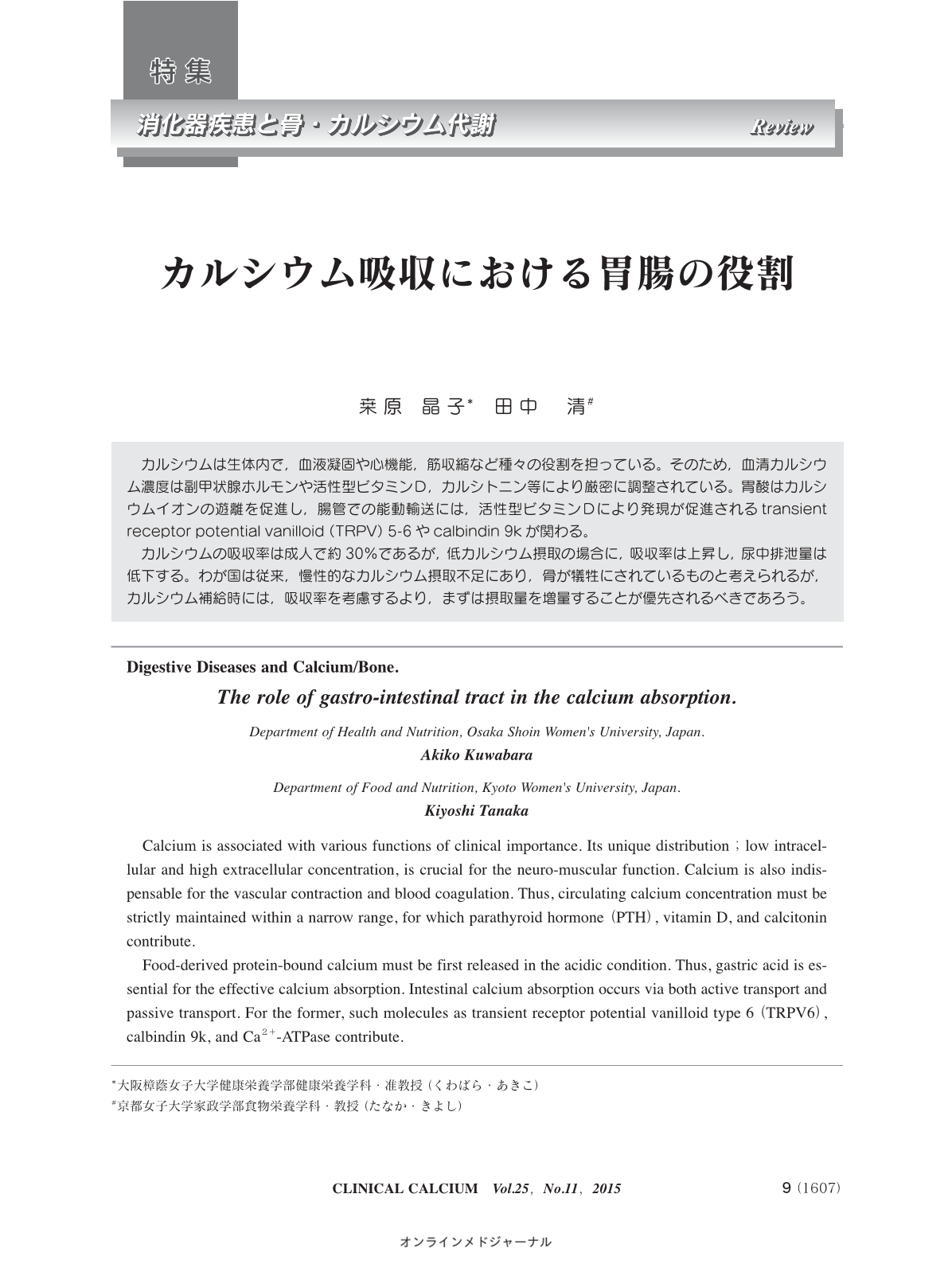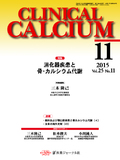Japanese
English
- 有料閲覧
- Abstract 文献概要
- 1ページ目 Look Inside
- 参考文献 Reference
カルシウムは生体内で,血液凝固や心機能,筋収縮など種々の役割を担っている。そのため,血清カルシウム濃度は副甲状腺ホルモンや活性型ビタミンD,カルシトニン等により厳密に調整されている。胃酸はカルシウムイオンの遊離を促進し,腸管での能動輸送には,活性型ビタミンDにより発現が促進されるtransient receptor potential vanilloid(TRPV)5-6やcalbindin 9kが関わる。 カルシウムの吸収率は成人で約30%であるが,低カルシウム摂取の場合に,吸収率は上昇し,尿中排泄量は低下する。わが国は従来,慢性的なカルシウム摂取不足にあり,骨が犠牲にされているものと考えられるが,カルシウム補給時には,吸収率を考慮するより,まずは摂取量を増量することが優先されるべきであろう。
Calcium is associated with various functions of clinical importance. Its unique distribution;low intracellular and high extracellular concentration, is crucial for the neuro-muscular function. Calcium is also indispensable for the vascular contraction and blood coagulation. Thus, circulating calcium concentration must be strictly maintained within a narrow range, for which parathyroid hormone(PTH), vitamin D, and calcitonin contribute. Food-derived protein-bound calcium must be first released in the acidic condition. Thus, gastric acid is essential for the effective calcium absorption. Intestinal calcium absorption occurs via both active transport and passive transport. For the former, such molecules as transient receptor potential vanilloid type 6(TRPV6), calbindin 9k, and Ca2+-ATPase contribute. In the adult, calcium absorption rate is approximately 30% under the ordinary condition. Lower calcium intake is associated with increased calcium absorption and decreased urinary excretion. In the Dietary Reference Intakes for Japanese, calcium requirement is determined based on factorial method. Recommended Dietary Allowance(RDA)for calcium ranges from 600-800mg/day for adult. However, the average calcium intake is far lower than Estimated Average Requirement(EAR). Thus, an effort to increase the calcium intake, rather than considering the detailed calcium absorption rate, is most essential in Japan.



